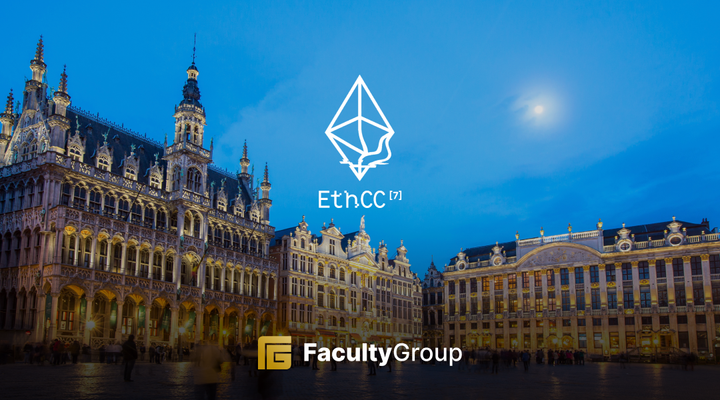Why diversification matters for decentralisation

Decentralisation has been heralded as the remedy to solve the ‘centralisation’ problem of market dominance by products, technologies, or corporations in Web2. This is illustrated very clearly by Google, Meta, Amazon and Microsoft’s dominance in their respective market segments and their centralised business models for data capture, cloud computing, targeted advertising, search or technologies like LLMs, Machine Learning and AI. AWS’s recent three-hour cloud outage did not take down Ethereum but highlights the risks associated with centralised cloud architecture.
Imagine if Amazon Web Services (AWS), Microsoft Azure, and Google Cloud Platform (GCP) went down; collectively, these three provide over 65% of cloud infrastructure services globally. However, consumers and businesses don’t use these corporations or technologies because they are centralised but because they have (to date) offered better products, services and/or user experiences. Consumers don’t care about anything other than convenience, UX and getting what they want, even if they are the product (the data emissions they produce). Network effects are not enough to out-compete incumbents.
The Merge and the transition to PoS were designed to make Ethereum more decentralised by incentivising more validators to join the network through the creation of staking rewards, thus making it more distributed and secure. In reality, Ethereum staking has ironically led to validation becoming more centralised as LSD protocols compete for Eth Staking market share.
Diversification: The Lido Problem
The entire Lido discussion in the Ethereum community is about platform risk. Lido dominates the market because it has the best user interface compared to its competitors (Frax, RocketPool, Stakewise, et al.) and lower fees on yield. However, it is easy for investors to think that their “ETH is safe'' and diversified when there is still smart contract and platform risk associated with Lido and the “stETH” which is the LSD receipt it creates. No one knows what will happen; hypothetically, several scenarios could occur, and Lido helpfully highlights the potential risks when staking ETH using liquid staking protocols:
- Smart contract security: Smart contracts could be hacked or exploited by outside entities.
- ETH - Technical risk: Lido is built atop experimental technology under active development, and there is no guarantee that ETH has been developed error-free.
- ETH - Adoption risk: The value of stETH is built around the staking rewards associated with the Ethereum beacon chain. If ETH fails to reach the required levels of adoption, we could experience significant fluctuations in the value of ETH and stETH.
- Slashing risk: ETH validators risk staking penalties, with up to 100% of staked funds at risk if validators fail.
- stETH price risk: Users risk an exchange price of stETH, which is lower than the inherent value due to withdrawal restrictions on Lido, making arbitrage and market-making impossible.
- DAO Risk: The Lido DAO could be exposed to a hostile takeover, for example, by a whale that buys 51% and uses this as an attack vector to take control of the platform.
The bottom line is that investors must diversify to protect themselves from risks, whatever their investment allocation. As in TradFi, there are portfolio risks in Web3 that need to be addressed, such as smart contract risk, platform risk, governance risk, and de-pegging financial risk. These are not outside the realms of possibility, and investors need to think strategically about portfolio construction and risk mitigation.
Decentralisation myths
There are many myths around decentralisation in Web3, and what makes projects ‘decentralised’: is it people, technology, decision-making, user base, applications or a combination of these? Even though teams are building ‘decentralised’ applications, most projects are still heavily centralised by the team’s initiative before the platform or application scales, especially pre-product.
Most DAO tokens and their governance tokens are controlled by the founding team or several funding entities (VCs, Angel investors, Whales or any combination of these). Similar to the Gini coefficient in traditional economics, metrics can be used to measure how centralised ecosystems are, such as how many tokens are concentrated across how many wallets and even the number of daily transactions across wallets for protocols.
Even if, for argument’s sake, the project is designed to be “decentralised”, the executive team still are the heart and soul of most projects, even DAOs. If they were to be voted out or leave the foundation/project, this would create organisational risk. Many in Web3 will make the argument that projects are open-sourced, which makes them decentralised (a tenuous claim at best), or projects are still building (using developer activity as a guide to future prospects). This is how ecosystems like Ethereum have built so much resiliency and such a large developer community.
For DAOs, there is a direct conflict between the project's need to control its destiny as a business and the desire of the community as a whole to control decision-making to profit from the DAO. Arbitrum’s recent withdrawal of their Governance proposal by the founding team illustrates the trade-offs between running a start-up and needing to move fast and break things and the desire to involve communities in decision-making. So far, no one seems willing to relinquish the dream of decentralised decision-making.
Every project starts with centralised decision making with the goal being to become more decentralised as the project evolves eventually. Being able to measure your network's progress towards decentralisation should be a key metric of success. These metrics could include unique wallets, developer activity, proposals by the DAO, decisions taken by the DAO and the number of active governance proposals and/or participants. Defining what being decentralised means and how this can be measured would be valuable for investors and ecosystems.
When building any portfolio strategy, investors balance risk vectors by diversifying across platforms, asset classes and markets. If the last few years have taught us anything, there are correlations across web3, no matter how much the market protests otherwise. In a highly correlated market among a small number of protocols, platforms and network layers, diversification is the only way to maintain or promote decentralisation in Web3, whether that is by spreading staked ETH across platforms to reduce platform risk or by strengthening DAO governance to address the risk to stability from founding team’s central control of networks that are not yet ‘fully decentralised’ and may never be.
Both investors and the Ethereum network can only address these issues by accepting tradeoffs regarding decentralisation. Vitalik’s recent tweet suggesting that any Ethereum Staking protocol should control no more than 15% of total staked ETH makes sense, but how would this be ‘enforced’? Should LSD protocols limit their own market share or put the security of the network before their revenues? This raises more questions than it answers.
Currently, Ethereum TVL is $49.5b USD, it has 24h transaction volume of circa $966m and 333k active users; size and depth matter for a functioning liquid market, especially when it is distributed. Ethereum proves it takes years and many iterations to create a functioning, reliable and fairly decentralised ecosystem that can deliver value to its participants and users.
However, full decentralisation is a myth; there is always a trade-off in any distributed network where there are multiple dependencies. This is true for any project, whether an L1, L2 or a DAO; it doesn’t matter. The Lido problem illustrates how Ethereum’s security and consensus can be compromised by centralising market forces and the tradeoffs that this creates for the community. This conversation is only the beginning.








